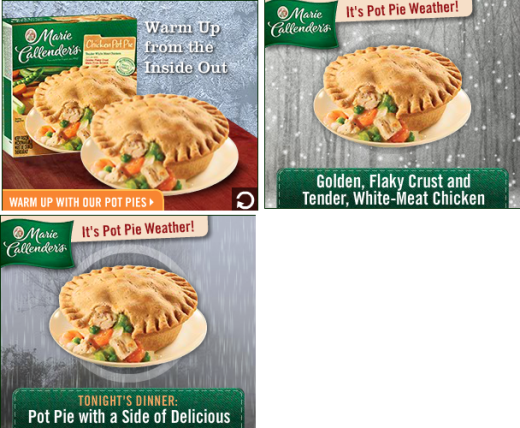
Have you ever gone to a party and met that person who introduces himself to you twice in the same 20 minutes? Chances are, the next time you found yourself opposite him at the punch bowl, you turned away. That said, we all love that person who remembers our name and what we talked about—and if we’re single, they’ll likely get our number.
Marketers, of course, are on to this. Go to any major retailer’s site or app today, and most (but not all) of the time they’ll know what you looked at last time you were there. Amazon has taught us this lesson well. The problem is that since most people are targeting to some degree, you have to go the extra mile to meet your customers’ needs.
Luckily we have some serious new capabilities for doing just that. By using your imagination and applying common sense, you can come up with targeted messages and ads that your customers will love. Here are a few ways to get started.
Check the weather
There’s a reason why supermarkets sell less potato salad on rainy weekends: no one needs it for a picnic. Weather can have profound effects on consumer needs and behavior—and brands are only just beginning to scratch the surface of understanding how to use it best.
A variety of different data management vendors can provide weather-based targeting—and all work fairly well. For example, at POSSIBLE, we once had consumer insight that demand spikes for comfort food when the weather turns sour. That helped us create a weather-driven campaign for Marie Callender’s that helped keep the brand top of mind.
Ditto the time
“Dayparting” is a big new buzzword in the advertising business, but it’s really a simple concept: we’re more open to certain messages at certain times or the day than others. For example, we respond better to restaurant ads around lunchtime. Less obvious is that working people tend to be on Instagram or Pinterest more at night. Weekends are different from weekdays, and so on.
Look at the address
Where people live can tell a lot about what they want to see. Smart companies, for example, vary their layouts between Japan and Europe. People in the former tend to like busier layouts than the latter, who find them tacky (for what it’s worth, the Japanese think European pages are cheap-looking). But even small distances can make a big difference in how people respond to messages.
You might think you could lump Seattle and Portland together, but the multivariate testing we’ve done proves otherwise. While both have strong tech industries, the economic similarity ends there. Portland has shoe companies, while Seattle has a lot of traditional industry—and that seems to make a big difference.
Use third party data
Most of us don’t have enough traffic to develop rich profiles of customers—but we don’t need to. Amazon, for example, allows you to place its Affinity Model Pixel on your page. That gives you a snapshot of the buying history and demographics of your visitors on Amazon.com, which is a much deeper level of insight than you’d get from your own data alone.
Similarly, Linkedin offers an Insight Tag that can give you a good idea of a person’s income and job title. If you know you’re dealing with a CEO, you might want to offer them a bit more bling.
Aggregate data
If you want to get real NSA-level tracking, look to a data aggregator, like Datalogix. They compile and combine data from a vast number of affinity programs (like the two we just discussed) to help you better understand your visitors’ buying patterns. For example, let’s say you buy a doll for a 2-year-old at a large online retailer. If you use an email address that’s associated with your Facebook account, advertisers can promote other toddler products to you on Facebook.
Needless to say, all of this requires a healthy dose of common sense. If you take tracking too far, as Target did in marketing to newly pregnant moms, you can quickly get creepy. In addition, consumer sensitivity towards tracking is rising. Consumers are becoming aware that services Siri, Google Now, Amazon Echo, and Hound don’t just use data to make their experiences better.
They also keep it and mine it for insight—often for up to two years. And every time we think we have reached the limits of the data-for-convenience trade, tech companies come up with something new. Recently, for example, Google launched a Nest Aware product that can constantly record what’s going on in your house. This can mean a great deal of security and peace of mind – in exchange for giving up a spectacular amount of data and privacy.
What gets done with that data is up to the companies who own it, and the most important advice when targeting is to use good judgment. A good rule of thumb is to avoid drawing attention to any insight you have. People generally know that you are collecting data, but they don’t want it to adversely affect the experience and they really don’t want you to make it conspicuous.
Targeting is all about giving people what they want, when they want. If you can do that, you’re well on your way to becoming a brand they’ll love.
Read Next: 7 shortcuts to making users trust you
Image credit: Shutterstock
Get the TNW newsletter
Get the most important tech news in your inbox each week.







